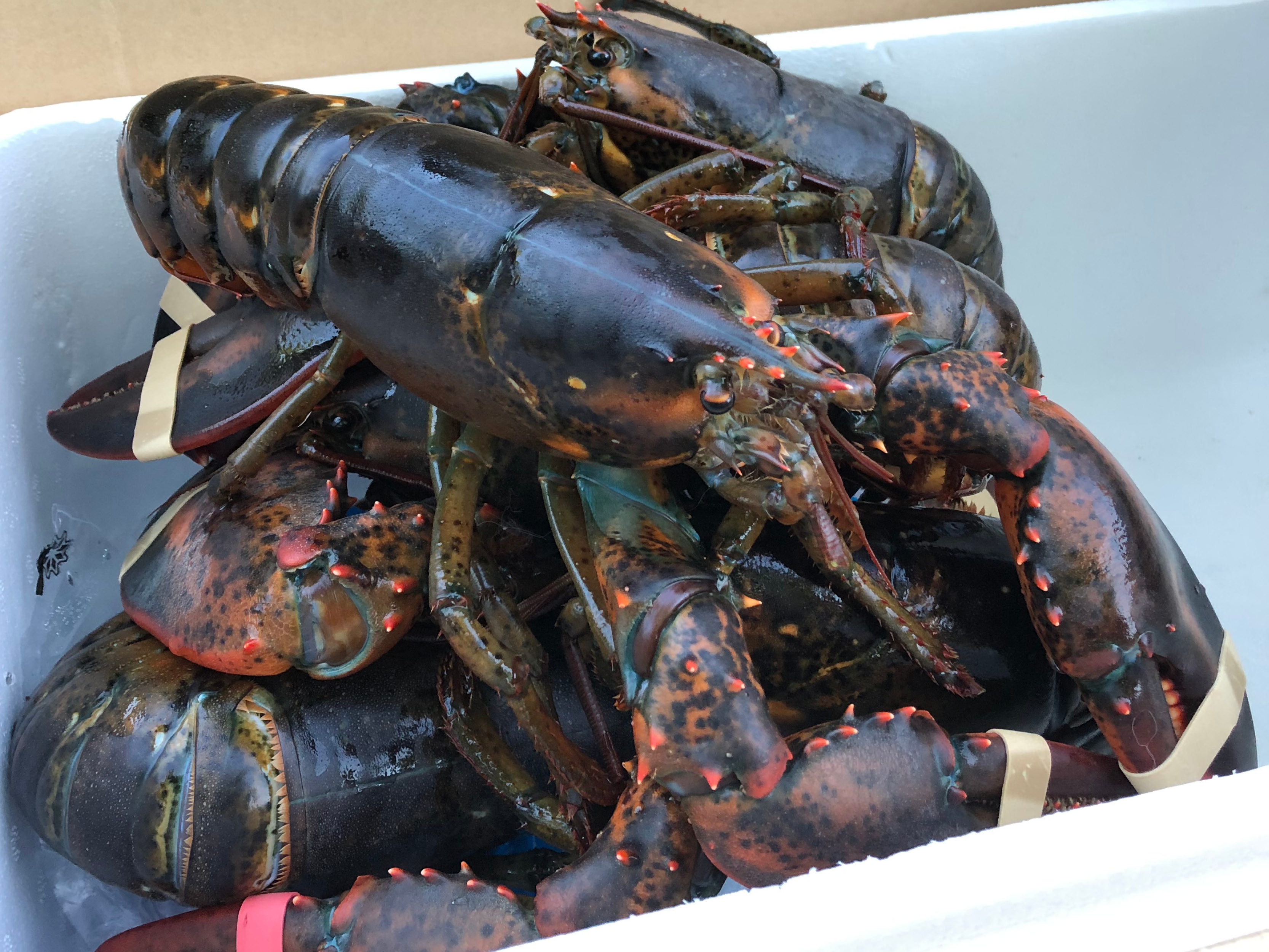After over a year of historically high prices that netted the lobster industry national attention – and articles questioning whether consumers could stomach $34.00 for a lobster roll – the wharf price for the species has reportedly dropped all the way back down to “normal” levels and even beyond.
The price lobstermen were getting at the dock in 2021 was historically high, with fishermen in Maine getting roughly $8.00 per pound and Canadian lobstermen in Newfoundland getting as much as $10.14 per pound, according to the Fish Food and Allied Workers Union.
Now, fishermen in Maine are reporting they are getting as little as half the price of what they received last year – and in some cases even less than that. Despite the precipitous drop, that price is still within the norm: Fishermen in Maine, according to statistics compiled by the Maine Department of Marine Resources, got on average $4.05 per pound for the entire year in 2018, which comes out to around $4.78 when adjusted for inflation.
The difference this time is that input costs have gone up across the board. Prices for ultra low sulfur diesel vary from port to port, but areas like Dysart’s Great Harbor Marina in Southwest Harbor, Maine are reporting prices as high as $6.05 per gallon. That’s almost double the $3.30 it cost per gallon in July 2021, according to the U.S. Energy Information Administration.
In addition to high fuel costs, bait continues to be an issue. The herring fishery, historically a large source of bait, continues to have low quota.
The pricing pressures are compounded by the ongoing struggle over right whale regulations. New NOAA regulations changed the requirements for fishermen and instituted a ban area, but a new court ruling found that even that hasn’t gone far enough to bring the fishery into compliance with the Endangered Species Act.
All the factors combined have led to a difficult year for fishermen, Bruce Fernald, a lobsterman out of Isleford, Maine, told SeafoodSource.
Whereas last year was a “fisherman’s dream,” this year has had challenge after challenge, and the right whale court cases are “hanging over us like a sword,” he said.
Fernald has been fishing for 49 years, and said he wants to continue fishing, but the current climate surrounding the industry is making things difficult.
In the end, the lobster industry in the U.S. state of Maine is largely decentralized, making each situation different from fisherman to fisherman. The Maine Lobster Marketing Collaborative told SeafoodSource that lobstermen acknowledge the price is largely out of their control.
“The price for Maine lobster is dependent on a host of factors that are outside lobstermen’s control such as weather and inventory of frozen lobster. And of course, this year, our industry is feeling the same pressures from inflation and labor issues that are affecting so many businesses around the country,” the collaborative said. “Our fishery is not a centralized industry – it’s made up of thousands of small business owners who make individual decisions on if and when they fish.”
Fernald has seen some of that decision-making first hand – some fishermen have even faced instances where they’re stuck at the dock with no one to sell their catch to.
“I know last week, within two weeks ago, the price started going down pretty big. There were some places that just didn’t buy for the weekend, or maybe into Monday,” he said. “Some of the guys didn’t go, because they didn’t have a place to sell them.”
That’s starting to straighten out, Fernald said, but even with buyers, the lower prices and higher costs are squeezing bottom lines.
“I am way behind last year already, not so much in poundage, but the dollar amount is quite substantial,” Fernald said.
The price of bait has been kept in check thanks to the availability of Atlantic menhaden – called pogies locally – but the price of things like lobster traps has also gone up along with fuel.
“If someone wants to buy a hundred new traps these days, some of those are $220 apiece,” Fernald said. “It takes quite a few lobsters these days to pay for one trap.”
Seeing the retail prices for lobster in some places, he added, doesn’t help when some fishermen are struggling.
“When you go around to different restaurants and see $44.00 lobster rolls, that kind of twists the knife a little more,” Fernald said. “Though I have seen some places that have two for $20.00.”
The price of lobster continues to be a result of the same pressures the wider seafood and grocery industry is facing. Grocery and seafood price inflation hit new records in the U.S. for the year ending in June 2022, and as prices increase and customers tighten spending, luxury goods like lobster are some of the earliest casualties.
Another big factor is the abundance of cheap snow crab. The snow crab market in Newfoundland and Labrador saw big drops in prices in early June, as decreased demand coupled with a big increase in quota led to an oversupply of crab.
That resulted in the Association of Seafood Producers publicly announcing that the snow crab market was “not functioning in a normal manner.”
Still, Fernald said he hopes that as the Canadian lobster season starts up and more processors begin to come online, the price will start to stabilize and fishermen can make a living.
“The more processors that are open, the more competition there is for the product, and hopefully it will at least stabilize the price,” he said. “We’ll see how the whole year shakes out.”
This story first appeared on SeafoodSource.com and is republished here with permission.







